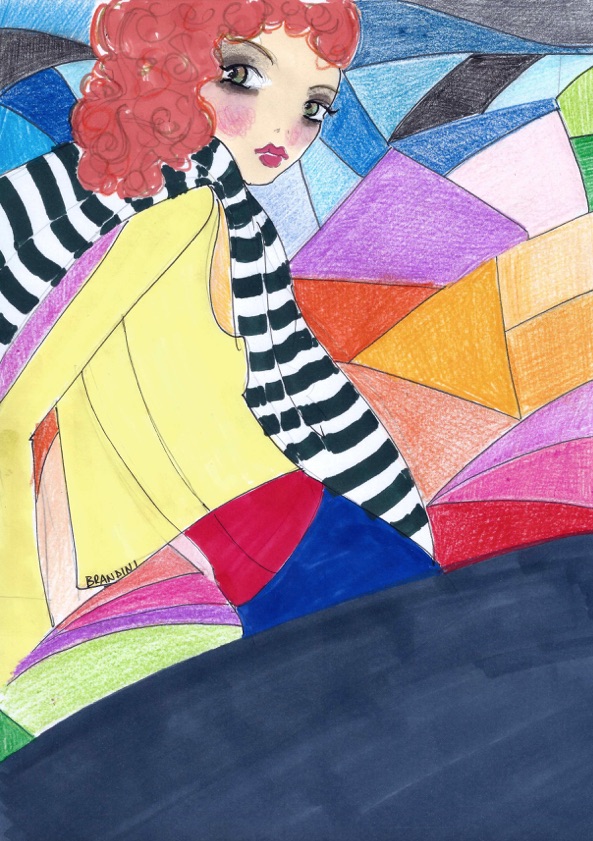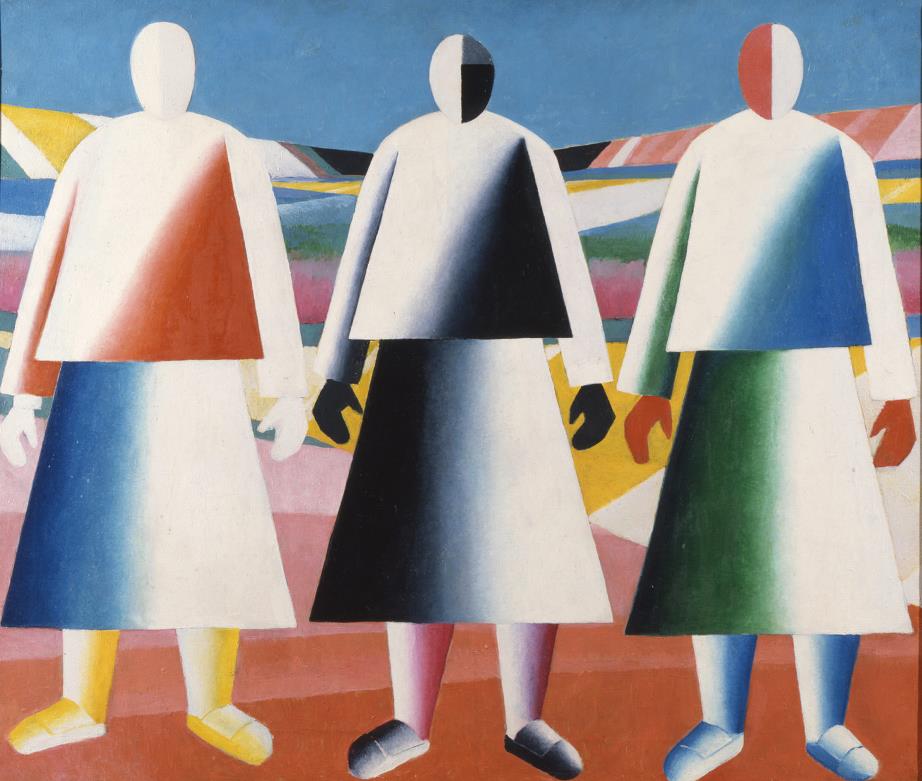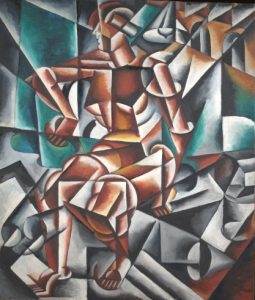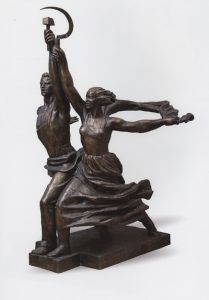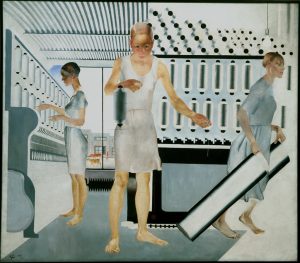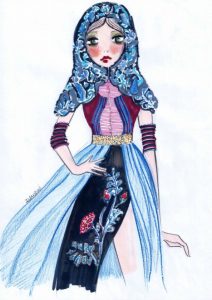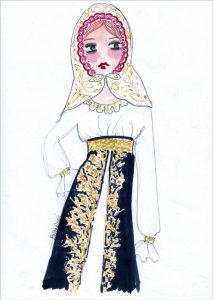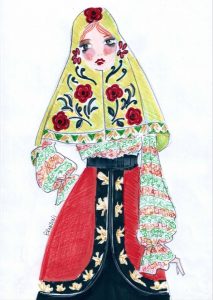“Olga” by Beatrice Brandini
Kazimir Malevič: “Girls in the field”, 1928 – 1929
Until April 5, the Palazzo Reale in Milano hosts a beautiful exhibition entitled “Divine and Avant-garde: Women in Russian Art”, an exhibition that explores the image and imagery of the female figure throughout Russian history. From subject and inspirational muse of works of art, to protagonist and interpreter of the same.
Lyubov Popova: “Air and Space Man”, 1913
It is nice that we are talking about female art, even if in truth this distinction shouldn’t even exist, at least not in terms of gender; but unfortunately, as in other sectors, even in the artistic field the figure of women has often been underestimated or even snubbed.
Vera Mukhina: “The worker and the Kolkotsiana”, 1936 (study of the bronze sculptural group)
The exhibition, curated by Eugenia Petrova and Josef Kiblitskij, accompanies us throughout Russian history, showing us a path that starts from the icons of the Mother of God and reaches the modern and important achievements of the avant-gardes, also by female artists. A cultural and social evolution manifested through artistic expressions.
It is a very articulated exhibition, with over 90 works, many of which come from the Russian State Museum in St. Petersburg. Extraordinary are the paintings by Olga Rozanova, protagonist of Russian Suprematism, or those by Natal’ja Gončarova, phenomenal interpreter of Futurism.
Alexandr Deineka “Textile workers”, 1927
The exhibition presents us the Orthodox icons, Virgins and Saints as idealized figures, the tsarinas of the opulent Russian empire, often pervaded by a veil of sadness in their eyes, the servants, with their heavy clothes and the typical handkerchief tied under the chin , and more city women, mothers, intellectuals.
The exhibition itinerary ends with an overview of the art of the regime, adopted by the Soviet Union since the 1930s. Like Vera Mukhina‘s bronze “The worker and the Kolkotsiana” from 1936.
“Mood Russian” by Beatrice Brandini
The exhibition is important because it offers truly magnificent works, some never exhibited in Italy, but also because it presents an image of a modern and real woman, a woman at 360 degrees. The protagonists are the Russian artists, interpreters of an extraordinary historical, cultural and social moment. The same ones who fought to get their rights, such as that of being part of the world of art.
“Women are the screw on which everything turns” Lev Tolstoy
The woman is in fact wife, mother, lover, worker, object of desire and much more, in artworks as in life; it is impossible to link her to a single role, out of duty and necessity, she has always been multitasking. After all, whether she is a Russian, Italian, English or African woman there is not too much difference, the figure and role of the woman are, for better or for worse, very similar all over the world.
Good life to everyone!
Beatrice


